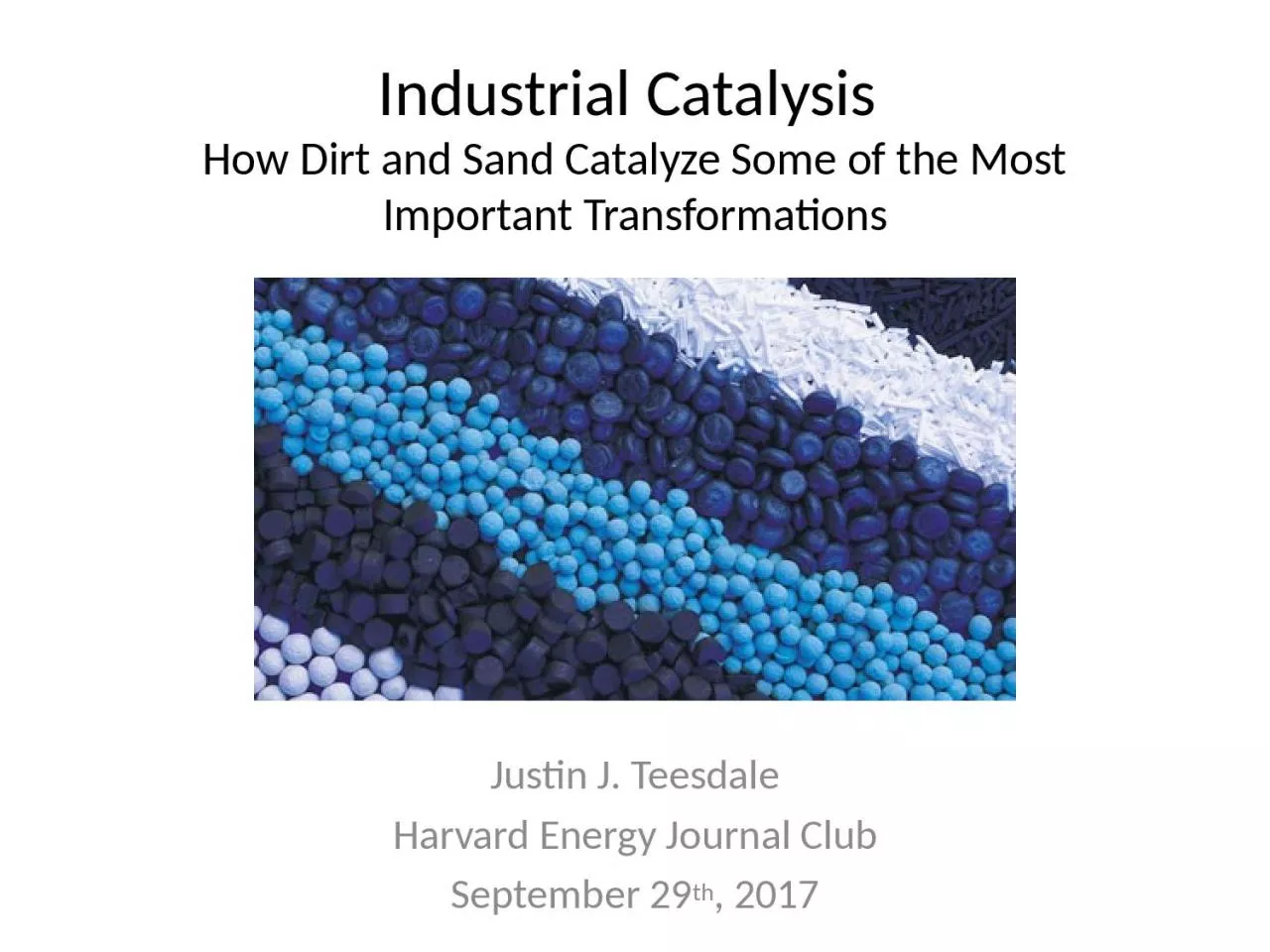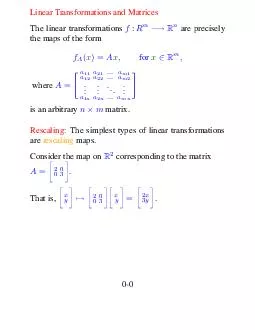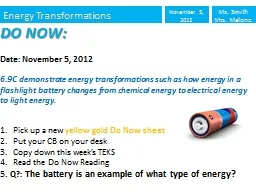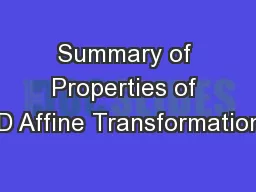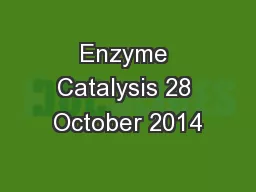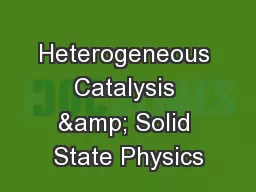PPT-Industrial Catalysis How Dirt and Sand Catalyze Some of the Most Important Transformations
Author : deena | Published Date : 2024-01-29
Justin J Teesdale Harvard Energy Journal Club September 29 th 2017 Industrial PetroChemical Energy Use In 2014 Total Primary Energy Supply TPES 155000 TWh 560
Presentation Embed Code
Download Presentation
Download Presentation The PPT/PDF document "Industrial Catalysis How Dirt and Sand ..." is the property of its rightful owner. Permission is granted to download and print the materials on this website for personal, non-commercial use only, and to display it on your personal computer provided you do not modify the materials and that you retain all copyright notices contained in the materials. By downloading content from our website, you accept the terms of this agreement.
Industrial Catalysis How Dirt and Sand Catalyze Some of the Most Important Transformations: Transcript
Justin J Teesdale Harvard Energy Journal Club September 29 th 2017 Industrial PetroChemical Energy Use In 2014 Total Primary Energy Supply TPES 155000 TWh 560 EJ International Energy Agency IEA 2011 . 1 2D Transformations Given a point cloud polygon or sampled parametric curve w e can use transformations for several purposes 1 Change coordinate frames world window viewport devic e etc 2 Compose objects of simple parts with local scaleposition orie a 12 22 a a mn is an arbitrary matrix Rescaling The simplest types of linear transformations are rescaling maps Consider the map on corresponding to the matrix 2 0 0 3 That is 7 2 0 0 3 00 brPage 2br Shears The next simplest type of linear transfo Rahul Dhami. Emily Cornell. Katey. Van Hoosier. Delightful . Dirt Bikes. Dirt Bikes was created on the basis of wanting to delivery more to the consumers of dirt bikes.. Was founded in 2009 in Denver, Colorado.. Nick . Dumford. Trevor . Scherlin. Travis Vogel. Background. Trevor won the company on a bet over a flipped coin and changed the name in 2007.. Asked Nick and Travis if they would like to help run the company. . . November 5, 2012. . Ms. Smith. Mrs. Malone. DO NOW. :. Date. : . November 5, 2012. 6.9C . demonstrate . energy transformations such as how energy in a flashlight battery changes from chemical energy to electrical energy to light energy.. Maurice J. . Chacron. and Kathleen E. Cullen. Outline. Lecture 1: . - Introduction to sensorimotor . . transformations. - . The case of “linear” sensorimotor . transformations: . Affine transformations . preserve. affine combinations of points. . . Affine transformations preserve lines and planes.. . Parallelism of lines and planes is preserved. . The columns of the matrix reveal the transformed coordinate frame.. Learning Targets: 8.G.2,8.G.3, 8.G.4. Follow the slides to learn more about transformations. Students should have paper and a pencil for notes at their desk while going through this presentation.. Transformation: a transformation is a change in position, shape or size.. . Slide by: . Carter Nichols. , Song By: . Jason Aldean. Lyrics. Yeah I’m chillin’ on a dirt road. Laid back swervin’ like I’m George Jones. Smoke rollin’ out the window. An ice cold beer sittin’ in the console. Katja. Dove. PhD Candidate, . Department of Biochemistry, University of Washington. Email: Katja.Dove@seattlecolleges.edu. Please turn in your take-home part for midterm 1 BEFORE class. I will hand back in-class exams at the end of class today. Dohyung. . Kim. May 2, 2013. Physics 141A. Catalysis. Catalysis . : . Increase . in the rate of reaction due to a catalyst. Types of Catalysts. Homogeneous : Catalyst and Reactant in the same phase. . 16-385 Computer Vision. Spring 2019, . Lecture 7. http://www.cs.cmu.edu/~16385/. Course announcements. Homework 2 is posted on the course website.. - It is due on February 27. th. at 23:59 pm.. - Start early because it is much larger and more difficult than homework 1.. CSE 455. Ali Farhadi. Many slides from Steve Seitz and Larry . Zitnick. What are geometric transformations?. Translation. Preserves: Orientation. Translation and rotation. Scale. Similarity transformations. (Lecturer). School of Studies in Zoology & Biotechnology. Vikram University, Ujjain. Lecture for . M.Sc. Biotechnology, Semester II . nd. students. Paper Ist- Enzyme technology. UNIT-IV. Topic- Enzyme classification.
Download Document
Here is the link to download the presentation.
"Industrial Catalysis How Dirt and Sand Catalyze Some of the Most Important Transformations"The content belongs to its owner. You may download and print it for personal use, without modification, and keep all copyright notices. By downloading, you agree to these terms.
Related Documents

